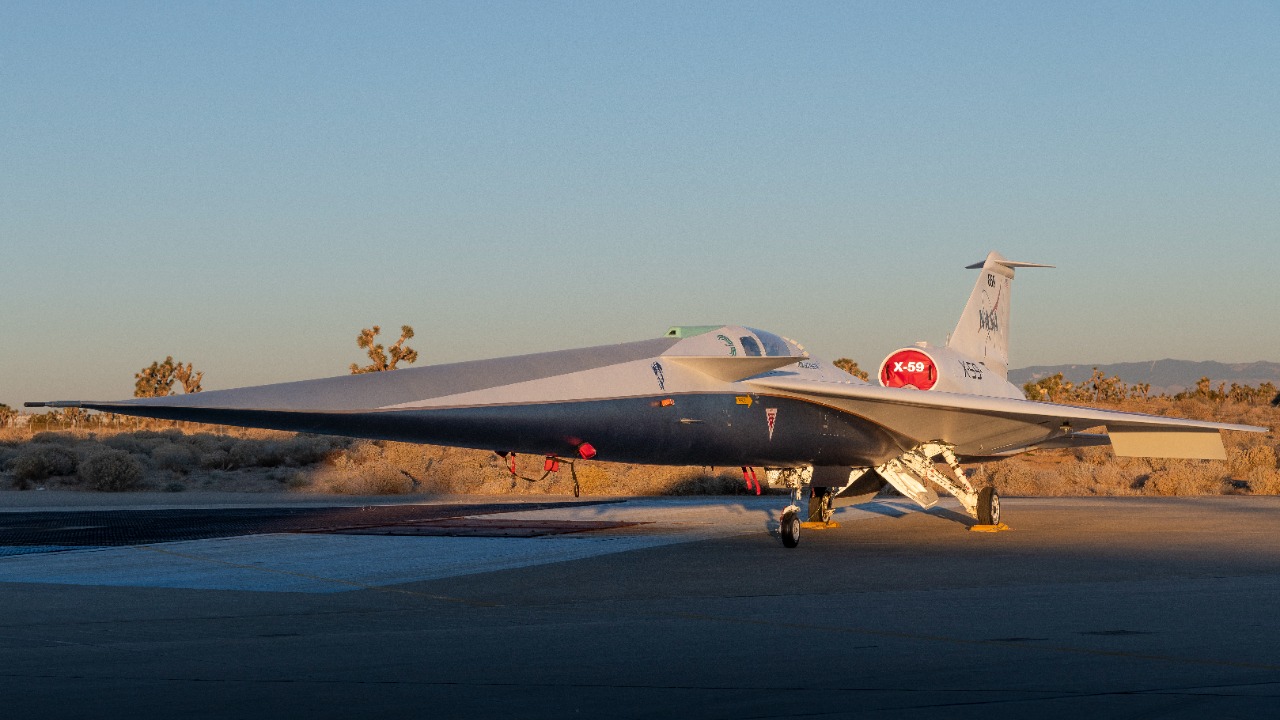
NASA’s X-59 QueSST, a groundbreaking supersonic technology demonstrator, has successfully completed its inaugural flight on October 28, 2025. This experimental jet, developed in partnership with Lockheed Martin, is designed to reduce sonic booms to a softer “thump,” marking a significant step forward in the pursuit of overland supersonic travel. The successful flight is a testament to extensive pre-flight preparations and years of engineering dedicated to noise abatement.
Development Origins of the X-59 QueSST
The X-59 QueSST project has its roots in NASA’s Quiet Supersonic Technology (QueSST) mission, which aims to enable quiet supersonic flight. This mission is particularly significant as it addresses sonic boom regulations that have prohibited overland supersonic travel since the 1970s. NASA and Lockheed Martin Skunk Works have been working together to shape the aircraft’s unique needle-like fuselage and highly swept wings, which are designed to transform shockwaves into a quieter sonic thump.
Key design specifications of the aircraft include a length exceeding 100 feet and a top speed target of Mach 1.42. These specifications, preserved from the initial concept phases, are critical to the aircraft’s ability to achieve quiet supersonic flight.
Early Testing Milestones in 2025
On January 29, 2025, an afterburner test was conducted at Lockheed Martin’s facility in Palmdale, California. This test was designed to evaluate the performance of the F404-GE-400 engine for future supersonic capabilities. The significance of this test lies in its ability to verify propulsion systems without full flight, ensuring the jet’s afterburner could sustain high-speed operations while minimizing noise.
These ground tests laid the foundation for subsequent aerodynamic validations, marking a significant milestone in the development of the X-59 QueSST.
Wind Tunnel Evaluations for Noise Reduction
On July 15, 2025, wind tunnel tests were conducted in Japan to evaluate the X-59’s ability to achieve supersonic flight without a traditional sonic boom. The goal was to produce a perceived outdoor noise level of 75 decibels. This collaboration with Japanese aerospace partners involved simulating airflow over the aircraft’s shape, confirming its potential to revolutionize quiet supersonic travel.
The results of these tests showed the design’s effectiveness in dispersing shockwaves, a critical factor for community acceptance of future commercial supersonic jets.
Pre-Flight Preparations and Timeline
As of September 15, 2025, the X-59 quiet supersonic demonstrator had advanced through final assembly and systems integration at Lockheed Martin’s Palmdale site. This progress included avionics checks and pilot training. Despite minor delays in instrumentation, NASA confirmed on September 26, 2025, that it was still targeting a 2025 first flight for the X-59.
Environmental and safety certifications were also completed to ensure the aircraft met FAA standards for its initial subsonic sorties. These certifications were crucial for the successful maiden flight of the X-59 QueSST.
Details of the Maiden Flight
The maiden flight of the X-59 QueSST took place on October 28, 2025. The flight, which lasted approximately 45 minutes, reached an altitude of 25,000 feet over the Mojave Desert from Edwards Air Force Base. The aircraft was piloted by NASA’s Ed Schneider.
Telemetry data collected during the takeoff, climb, and landing phases validated the aircraft’s stability and control systems in real-world conditions. The flight’s subsonic profile was a deliberate first step, with no supersonic elements yet, to build confidence before accelerating to Mach speeds.
Implications for Supersonic Aviation Future
The data from the X-59’s maiden flight will support NASA’s goal of providing sonic thump measurements to regulators. This could potentially lead to the lifting of the U.S. ban on overland supersonic flights by the early 2030s. Planned follow-on tests include up to 100 research flights over U.S. communities in 2026 to gauge public reaction to the quieter boom.
The broader implications for the industry include influencing designs for next-generation supersonic passenger aircraft from companies like Boom Supersonic. The success of the X-59 QueSST marks a significant milestone in the quest for quiet supersonic travel, potentially revolutionizing the aviation industry.
More from MorningOverview